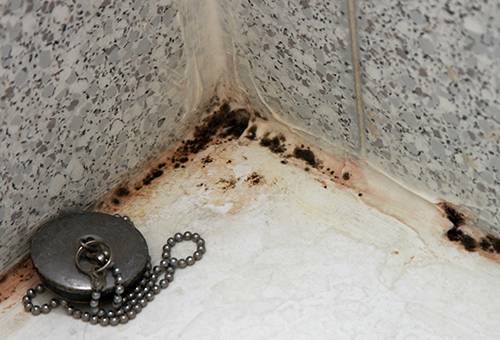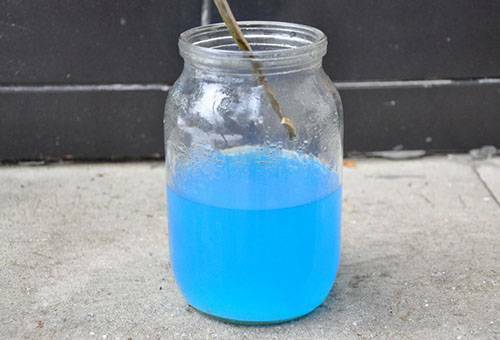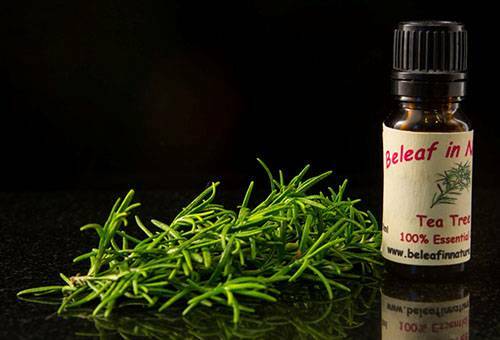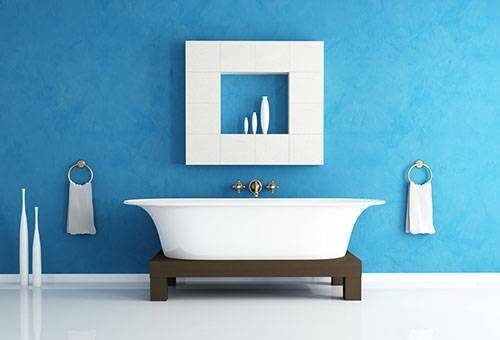Content:
- How to proceed?
- Disinfection means
- Folk remedies
- Preventative measures
Each of us has had to deal with this ubiquitous, indestructible mold that has a specific, easily recognizable unpleasant odor. Many people do not know how to get rid of the fungus in the bathroom for a long time, so that suddenly one day one does not see again the hateful black mold in the seams between the tiles. After all, as with ordinary fungi, the root system of mold splits in different directions, penetrating into the wall on which it settled, and releasing new colonies. If at least one of her disputes goes unnoticed in the depth of the seams, a whole network of mold fungi will again develop from it.
Where does black mold come from? Its spores are carried by the wind and spread through the air. You can bring them home on your clothes. Having fallen into favorable conditions for them, they instantly begin to develop. And the main conditions for their life are humidity of air above 70% and temperature not lower than + 15 ° C.It is this atmosphere that is usually present in the bathroom.
In addition to the fact that the mold completely crosses the stylistic integrity of the interior, giving the tile in your bathroom an untidy and unpresentable appearance, its spores, spreading through the air, penetrate the lungs, causing various diseases. They pose a particular danger to those who suffer from allergies, and are able to provoke this disease in healthy people. The most toxic is black mold, which, settling in the body, attacks its healthy cells, which can lead to serious consequences.

How to proceed?
How to clean mold in the bathroom? The only effective method of fighting against mold is the removal of tiles and the complete removal of plaster on the affected wall. At the same time, it is necessary to capture the area about half a meter more than the apparent area of the lesion. And since disinfectants are toxic not only to the fungus, but also to humans, take precautions before cleaning. If the room has a window, it is better to open it. All work should be done in rubber gloves, a respiratory mask and goggles. For processing, you will need:
- self disinfectant solution;
- is a normal detergent;
- brush with stiff bristles;
- sponges.
If the area of the wall where the mold is located is small and you do not want to fight it in a radical way, try to treat the seams with an antiseptic without removing the tile. To do this, follow a simple instruction.
- Remove visible parts of the fungus mechanically using a brush and detergent. Especially carefully wipe the seams between the tiles.
- Apply a remedy for the fungus to the affected area.
- After 15-20 minutes, wash the treated area.
- Thoroughly dry the treated surface with a construction hair dryer.
However, no one will give you a guarantee that after a while the fungus spores, settled deep in the seams, will not rise from non-existence.

A larger operation consists of the following.
- Dismantle the tiles on the affected area.
- Complete plaster removal.
- Clean area with detergent.
- Application of an antiseptic spray on the area to be treated.
- Repeated spraying of the agent to remove the mold for sure.
- Thorough removal of the product with plenty of water.
- Dry the surface with a construction hair dryer.
Then you can revet the wall again. Keep in mind that the removed tile, as well as all objects that come into contact with the fungus: gloves, sponges, brushes - must be disposed of.

Disinfection agents
Black mold eradication agents can be purchased at construction stores. In this case, they should be indicated that they are designed specifically for removing mold, and not for prevention. Almost all of them are characterized by a pungent smell and are very toxic.
- Chlorine bleach. A glass of this product is dissolved in 4 liters of water.
- Chlorine powder. It needs to be mixed with water in a 1: 1 ratio.
- Copper vitriol. It is enough 100 g per 10 liters of water.
- Antiseptics based on turpentine, "White Spirit" or oils.
- Ready-made disinfecting solutions, designed specifically for fighting fungus.

Folk remedies
In addition to these chemicals, the fungus can also be derived from folk methods. They imply the use of much less toxic substances that do not have a sharp unbearable smell. From a safety point of view, for people with respiratory problems suffering from asthma or allergies, this is the ideal antiseptic option at home. As for their effectiveness, this is to be seen to you, since we do not possess any reliable information about this, which has been tested in practice.
- Apply ordinary baking soda to the tile and seams and spray them with vinegar. After the froth resulting from the chemical reaction settles, clean the area with soapy water or detergent.
- Dissolve 2 tsp.essential oil of tea tree in 500 g of warm water and spray this mixture on the affected area. Then it is better to leave it as it is, without flushing.
Advice
Apply the solution better at night, when nobody uses the bathroom.
- Mix boric acid, table vinegar, hydrogen peroxide and water in a ratio of 1: 2: 2: 4.The resulting mixture is applied to the tile and to the seams.
- Take 2.5 liters of warm water, pour into it 1 cup of borax and apply the solution to the problem site with a spray gun or paint brush. This remedy for the fungus in the bath is best not to rinse.
- You can grease the trowels with anthracene oil. However, it has a characteristic unpleasant odor. Therefore, it is required to ventilate the room well.
- Place camphor balls or iodine solution in the room. This method is more suitable for prevention.

Preventive measures
In order not to deal with this problem again, eliminate all the prerequisites for its occurrence. Here we give the reasons for the appearance of mold and, accordingly, the ways to eliminate them.
Provoking Factors
All these comprehensive measures against mold will help you get it out and drive out of your life. |

